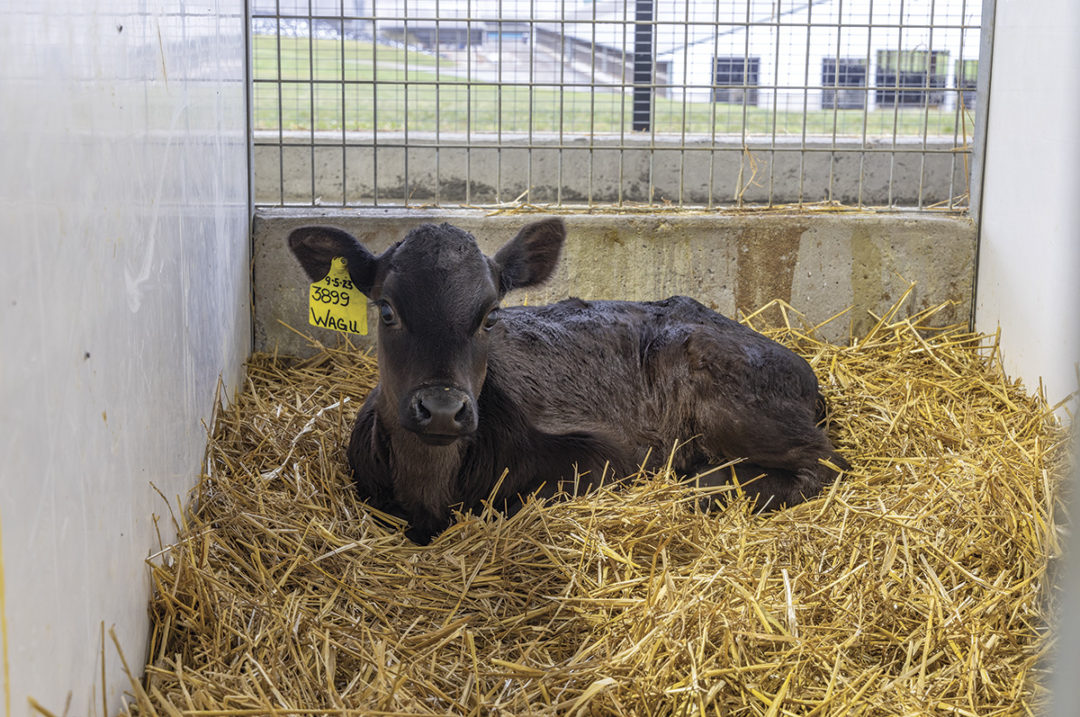When it comes to adding revenue in today’s market, one breeding strategy comes to mind: beef-on-dairy. While milk prices may be less than stellar, the price of beef calves has skyrocketed. Drought and input costs have left many native beef producers unable to maintain their operations, creating a shortage of beef calves to fill the feedlots, processors and consumers’ plates. Dairy producers have been able to deliver direly needed animals to the beef supply chain in the form of crossbred cattle, while also benefiting from high prices. In some areas, day-old beef-on-dairy calves are garnering over $1,000.
To maintain these favorable markets over time, dairy producers can apply the same discernment to breeding crossbreds as we do in breeding our dairy replacements. Beef breed association expected progeny differences (EPDs) offer a solid starting point to do so. While dairy producers are heavily driven by fertility and calving ease when it comes to a beef breeding, there are additional traits that can create cattle desirable to the beef market, creating valuable relationships for the longer-term profits.
Dairy-centric traits
When running a tight reproductive ship, what is important? Getting the cow in calf and an easy, trouble-free birth so the dam can quickly return to production is at the top of the list.
Fertility is not typically characterized in beef breed association EPDs. There are a few genomic estimates available for beef bulls, but not all A.I. companies acquire and use these results. Some companies offer internal Fertility indexes based on actual beef sire performance in dairy herds. Investigate available options to use sires with confidence.
While days open can be costly, we know difficult calvings can be more costly, from reduced milk production in the next lactation to potential loss of calf or dam. Calving Ease EPDs are based on recorded calving ease scores and birthweights of a sire’s progeny when used on beef heifers. Calving ease for beef sires is expressed opposite of dairy. A high score means more calving difficulty in dairy and is therefore unfavorable. In beef, the score is expressed as percentage of unassisted births, meaning a high EPD results in an easier birth.
The Birth Weight EPD, if available for the breed you have selected, may also be used with a lower weight tending to manifest as an easier calving, but note the Calving Ease EPD already includes Birth Weight in its formulation.
Growth traits
Many breeds offer traits that can be used as indicators of growth. In the Angus breed, Weaning Weight and Yearling Weight both predict differences in calf weight in pounds among a sire's progeny, at 205 days and 365 days, respectively. Higher values for each trait should translate to greater growth performance.
Similarly, a higher Residual Average Daily Gain (RADG) value should translate to more efficient growth. RADG compares gain variation per the same amount of feed consumed – a starting point for efficiency.
For a dairy producer raising their beef-on-dairy calves to a higher weight, these production traits translate to more pounds at sale. Even if producers aren’t retaining their calves, producing consistent, growthy calves can keep them in good favor with their buyer, who likely appreciates the predictability of calves from certain sources. This practice will contribute to a long-standing market for the dairy producer, even if the market changes.
Terminal traits
Carcass, or terminal, traits may seem distant when looking at a newborn calf – but most developed supply chains demand cattle that can produce a quality carcass. Many feedlots sell their fat cattle to packing plants on a pricing structure called a grid. Grid pricing rewards or discounts based on individual carcass quality and yield. So knowing they are procuring cattle that have the genetic potential to meet their expectations is advantageous.
Carcass Weight (CW) predicts the difference in weight of the carcass in pounds, with a higher value being beneficial. On grids, premiums and discounts are paid or deducted per hundredweight (cwt) of carcass. A heavier carcass that attains a quality grade of Prime will make more than a lighter counterpart that also hits Prime. The highly heritable trait of Marbling is directly linked to a carcass’s USDA quality grade (QG). Prime is the highest grade, with only the most highly marbled carcasses attaining this mark. Currently, many grids are heavily rewarding QG, with some featuring a premium of up to $25 or more per cwt – meaning a 900-pound carcass would make an additional $225 for grading Prime.
Ribeye Area (RE or REA) indicates difference in the ribeye in square inches, with a larger ribeye sometimes indicative of more muscling – too large, though, can prevent a carcass from acceptance to certain branded programs.
Some breeds also offer a Terminal Index, which can be used to select for carcass traits as a whole. Consult the beef breed’s association for more information.
Practical application
There are a lot of beef traits available for selection. How do we know which matters most? It comes down to knowing your buyer and communicating the value of your crosses’ genetics.
While beef-on-dairy has been critical to the beef supply, talk among feeders is that when the native population rebounds, they will become far choosier about the beef-on-dairy cattle they procure. Feeders want to develop relationships that allow them to procure the best, most consistent, most predictable crossbreds.
Let’s run through a few scenarios to see where certain traits could be prioritized.
- Scenario 1: This dairy uses beef sires on mature cows and some younger females, which tend to have a harder time calving. They want a guaranteed market and do not want the risk of raising calves to a higher weight, so they sell through a specific supply chain program that buys day-olds and values QG at the end of the line. The producer may choose to focus on Calving Ease, as well as terminal traits including Marbling to impart high quality, if the buyer has not already suggested a preference in terminal trait thresholds.
- Scenario 2: Envision a small dairy that is not serviced by a program pickup route but finds value in marketing elite beef-on-dairy through a local sale barn. They like to use elite genetics and corresponding visual tags to indicate value. In this case, it is nearly impossible to know where the calves may end up, therefore making trait selection specific to a certain downstream buyer difficult. This producer can focus on Fertility. They may also avoid calves that are too small with the Birth Weight EPD. Many sale barns highly differentiate calf prices by weight.
- Scenario 3: This dairy raises their crossbred calves to 500 pounds. They then market directly to a feedlot whose grid favors heavier carcasses. The dairy producer can focus on growth traits such as Weaning Weight and RADG for efficiency in the feedlot and terminal traits like Carcass Weight that their partner feedlot prefers to optimize performance on their grid.
While factors like fertility and calving ease are directly felt by the dairy, it is beneficial to address the buyers’ needs, too, through genetic selection for growth and carcass. Through careful genetic selection, you can produce calves that meet the beef supply chain’s needs, thereby building valuable relationships and setting your beef-on-dairy program up for longer-term success.











